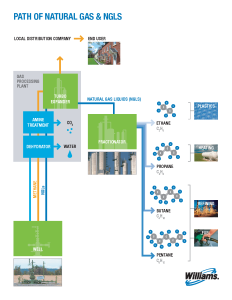I loved school. Yes, I was a geek that even played school with my sister during the summer. She was the teacher and I begged for more math problems – something my fifth-grade son cannot comprehend.
Summer would get pretty boring, so I was always ready to get back to school. Going back meant shopping for school supplies (a big event), getting a new teacher and seeing friends.
Nowadays, school supplies are pre-packaged for purchase by parents (like me) who don’t want to hassle with finding the specific type of marker or notebook. Kids and parents get to meet the teacher a few days before school starts, visit homeroom, cover books, and bring all supplies. Back to School Night for parents included teachers giving a rundown of class rules, procedures and what to expect.
In the 70s, we just showed up on the first day and figured it out.
A Big Education
When I first started with Williams 20 years ago this month, I was in for a big education. I didn’t know much about energy. Until that point, I had pretty much just flipped a switch and there was light. I turned on the stove and there was a flame. I drove to QuikTrip and filled up.
Growing up in Oklahoma, I had seen oil derricks, storage tanks and power transmission lines, but really hadn’t given energy much thought. And in school, I don’t recall ever learning how we got the energy we used every day.
Luckily when I joined Williams, there were people like Dave Darcey, our VP of Strategic Development, who took the time to teach me the basics of natural gas production, treating, processing and transportation. Dave loves white boards and markers. He really should have been a teacher.
And I had no clue about the huge investments companies and utilities made to bring me the energy I took for granted.
Natural Gas 101
Below is a graphic I have used to help explain how we get natural gas and capture the valuable components in the natural gas stream. I don’t think a lot of people know that valuable products like propane, butane and ethane can be part of the natural gas stream. By cooling the gas stream at a processing plant, these liquids fall out or separate from the methane.
Since we live in such a visual world, instead of writing the steps involved in getting natural gas from the ground to our homes, I’m including links to some videos I found helpful.
Video Links
Getting it out of the ground (aka exploration and production): Marathon Oil Company’s video is excellent and shows how hydrocarbons are safely produced.
Natural Gas Basics: Student Energy’s Natural Gas 101 video is well done and covers how liquids are removed from the natural gas stream.
Schools Today
In looking through my son’s science book last night, I saw a total of three pages dedicated to energy resources, but nothing about the massive amount of equipment, technology, infrastructure and science it takes to bring it out of the ground and make it usable. Maybe that comes later.
I was impressed to see the Oklahoma Energy Resources Board has a program called Petro Pros where energy industry employees volunteer to go to schools to help students learn about the oil and gas industry. They also have great information on how we all can conserve our natural resources.
The earlier kids learn about how we harness energy to provide so much of what we depend on every day and often take for granted, the better equipped they will be at finding the right mix of energy for the future.
To put my money where my mouth is, I just signed up to be a Petro Pro and hope I can help bring energy education back to school.
Other good resources include:
American Gas Association: Natural Gas 101
U.S. Energy Information Administration: Natural Gas Explained
Exxon: The Outlook for Energy
ANGA & WPX Energy: Natural Gas 101: Covering the Basics
Sara Delgado, a communications specialist and 20-year Williams employee, wrote this post. This is part of an occasional series called #Natgas Mom.


